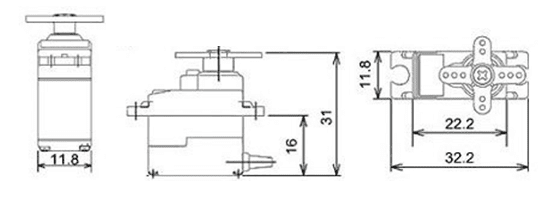What is Servo Motor?
A servomotor (or servo motor) is a rotary actuator or linear actuator that allows precise control of angular or linear position, speed, and acceleration. It consists of a suitable motor with a sensor for position feedback.
How does a Servo Motor work?
According to the desired position of the shaft, command input is delivered. An error signal is produced if the feedback signal deviates from the input. The motor then rotates as a result of the erroneous signal being amplified and applied as input. Additionally, the motor remains stationary while retaining the position when the shaft reaches the desired position and the error signal changes to zero.Electrical pulses are used as the input for the commands. The speed of the motor is proportional to the difference between the current position and the needed position because the actual input provided to the motor is the difference between the feedback signal (current position) and the applied signal (required position). The motor's power requirements are inversely correlated with the distance it must cover.
what is the inside servo motor?
- small DC motor
- potentiometer
- control circuit
- Gears
Pinout of servo motor
Specifications of Servo motor
- Torque: 2.0kg/cm(4.8V), 2.2kg/cm(6V)
- Speed: 0.09s/60°(4.8V), 0.08s/60°(6V)
- Rotate angle: 180°
- Operating voltage: 4.8 ~ 6V
- Gear: Plastic
- Deadband: 7us
- Weight: 10.5g
- Dimension: 22.8mm × 12.2mm × 28.5mm
The layout of Servo Motor
Application
- Conveyors
- Robotics
- Applications in-camera autofocus
- Robotic Vehicles
- Solar Tracking Systems







